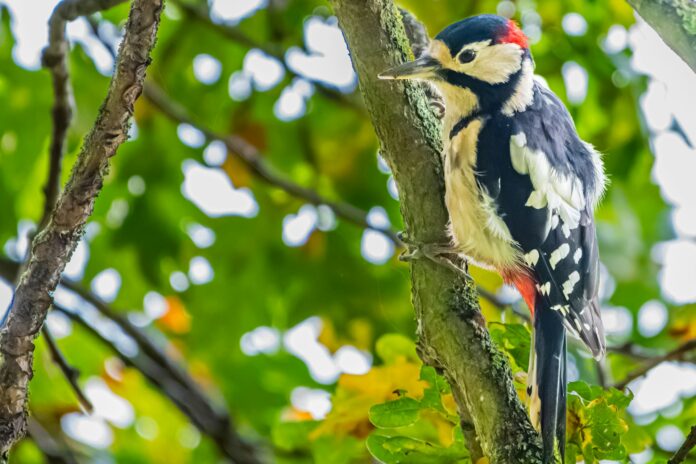The Great Spotted Woodpecker (Dendrocopos major) is a fascinating bird species that can be found in various parts of the world. With its distinctive red cap and black and white striped back, this woodpecker is a sight to behold. But where does it live, and what makes its habitat so special? In this article, we’ll delve into the world of the Great Spotted Woodpecker and explore its habitat, behavior, and unique characteristics.
Habitat and Distribution:
– The Great Spotted Woodpecker can be found in deciduous and mixed forests across Europe, Asia, and North Africa.
– Its habitat ranges from lowland forests to mountainous regions, up to 2,000 meters above sea level.
– This woodpecker is a cavity-nesting bird, meaning it excavates its own nesting sites in dead or living trees.
Behavior and Adaptations:
- The Great Spotted Woodpecker is a social bird, often found in pairs or small groups.
- Its diet consists mainly of insects, sap, and nuts, which it extracts using its powerful beak and tongue.
- This woodpecker has a unique shock-absorbing skull, which allows it to withstand the impact of drumming on trees without causing damage to its brain.
Conservation Status:
- The Great Spotted Woodpecker is listed as Least Concern on the International Union for Conservation of Nature (IUCN) Red List.
- However, its population is declining in some regions due to habitat loss, fragmentation, and degradation.
Interesting Facts:
1. The Great Spotted Woodpecker can drum up to 20 times per second, making it one of the fastest drumming birds in the world.
2. Its drumming serves as a form of communication, used for territorial defense, attracting mates, and signaling alarm.
3. This woodpecker has a unique way of extracting sap from trees, using its beak to create small holes and its tongue to lap up the sap.
Conclusion:
The Great Spotted Woodpecker is an intriguing bird species that has adapted to its environment in remarkable ways. By understanding its habitat, behavior, and unique characteristics, we can appreciate the importance of conservation efforts to protect this and other bird species. Remember to respect and cherish these incredible creatures and their habitats, and enjoy the opportunity to spot them in their natural environment.


